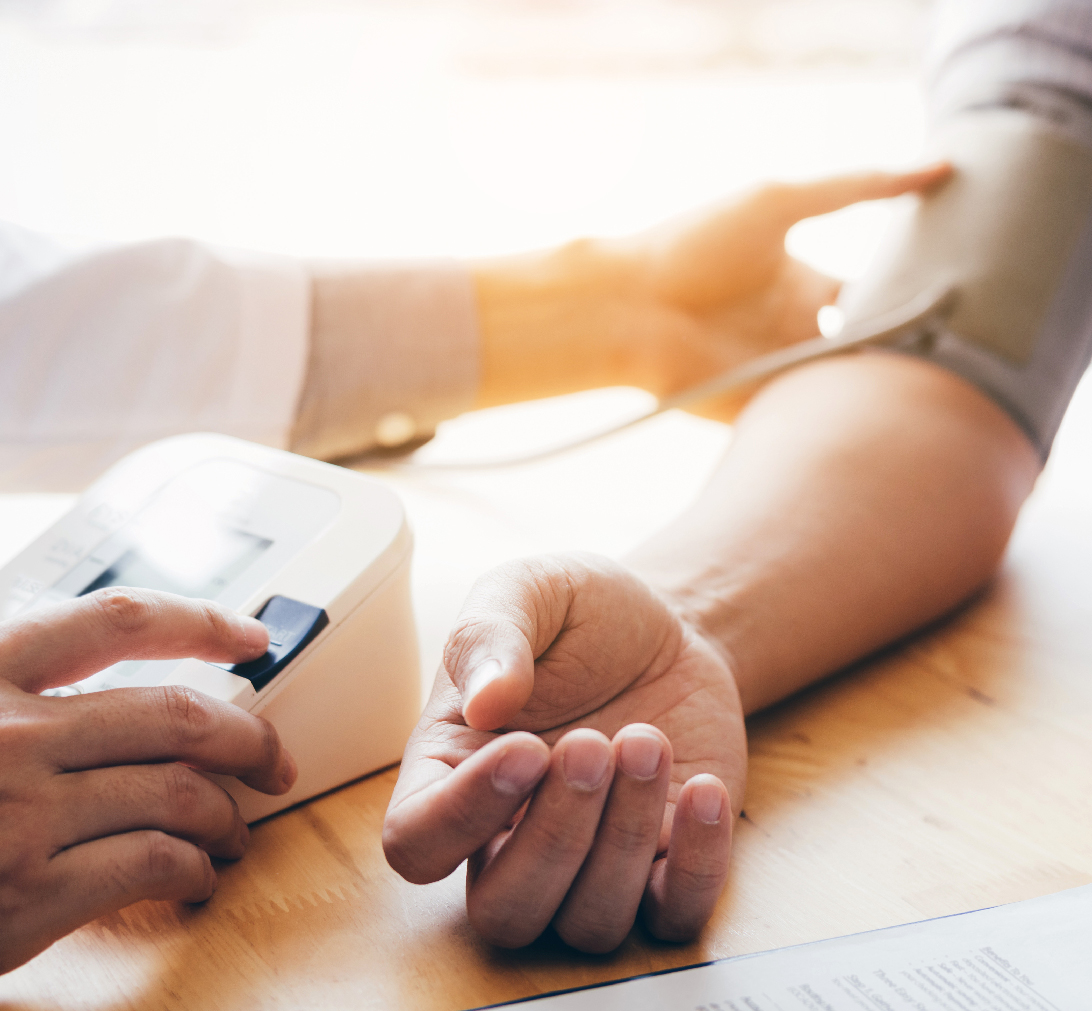HIGH BLOOD PRESSURE
Pathology
High blood pressure (HBP) is a very common chronic disease.
It is caused by abnormally high blood pressure in the blood vessels and seems harmless because it is usually silent. The risk factors are an unbalanced diet with excessive consumption of salt and saturated fats, a sedentary lifestyle, obesity, as well as smoking and alcohol consumption. Family history and the coexistence of other pathologies such as diabetes or kidney failure are aggravating factors. High blood pressure occurs when either or both of the following values, measured at rest, are higher than the normal values: 140 mmHg (millimetres of mercury) for systolic pressure and 90 mmHg for diastolic pressure.
HIGH BLOOD PRESSURE
Pathology


Issue
High blood pressure is the most common cardiovascular disease, and is even the leading chronic pathology in France.
One third of adults are thought to be affected. Its incidence increases with age: less than 10% of 18-34 year olds are affected, compared to more than 65% among those older than 65. • As high blood pressure is most often silent (without any symptoms), many people are unaware that they are affected. • Only half of people with high blood pressure are aware of their condition. Of these, reportedly only half are treated with antihypertensive medication. • Half of those treated are said to have normalised blood pressure. These figures give a good idea of the scale of the public health challenge represented by the disease, its diagnosis and treatment.
Issue
High blood pressure is the most common cardiovascular disease, and is even the leading chronic pathology in France.
One third of adults are thought to be affected. Its incidence increases with age: less than 10% of 18-34 year olds are affected, compared to more than 65% among those older than 65. • As high blood pressure is most often silent (without any symptoms), many people are unaware that they are affected. • Only half of people with high blood pressure are aware of their condition. Of these, reportedly only half are treated with antihypertensive medication. • Half of those treated are said to have normalised blood pressure. These figures give a good idea of the scale of the public health challenge represented by the disease, its diagnosis and treatment.

Key figures
According to the Word Health Organization, 30% of men and 50% of women over the age of 65 have high blood pressure, i.e. over 1.2 billion people worldwide, with a sharp increase in low-income countries. Each year, 10 million deaths worldwide are directly attributable to high blood pressure. When uncontrolled, high blood pressure is one of the main causes of cardiovascular, cerebrovascular or neurodegenerative complications (myocardial infarction, stroke and Alzheimer’s disease among others). It is important to point out that approximately 30% of patients do not respond, or respond insufficiently, to currently available treatments.
Key figures
us
-
Phone +33 (0)2 43 27 72 72
Email : contact@theradev.fr
© 2021 Theradev
Disclaimer and Privacy Policy
